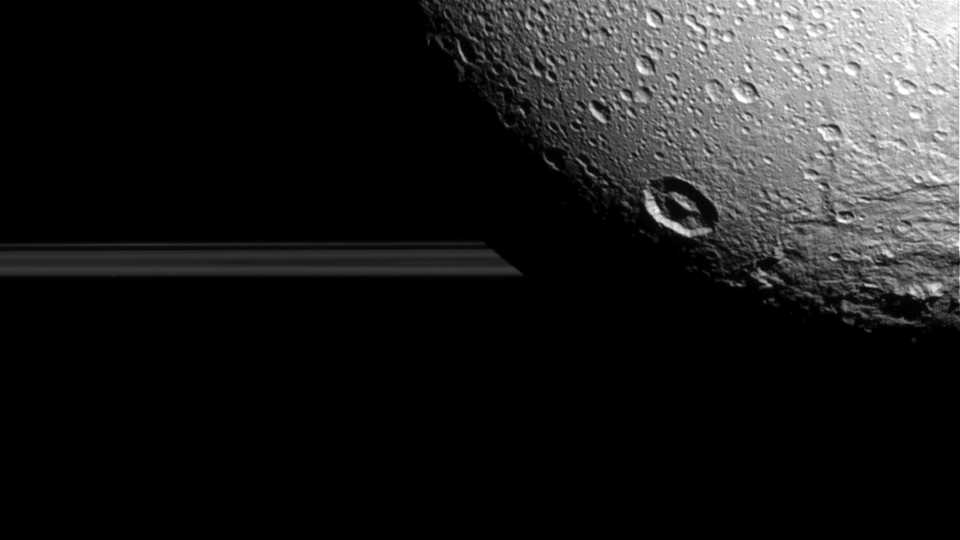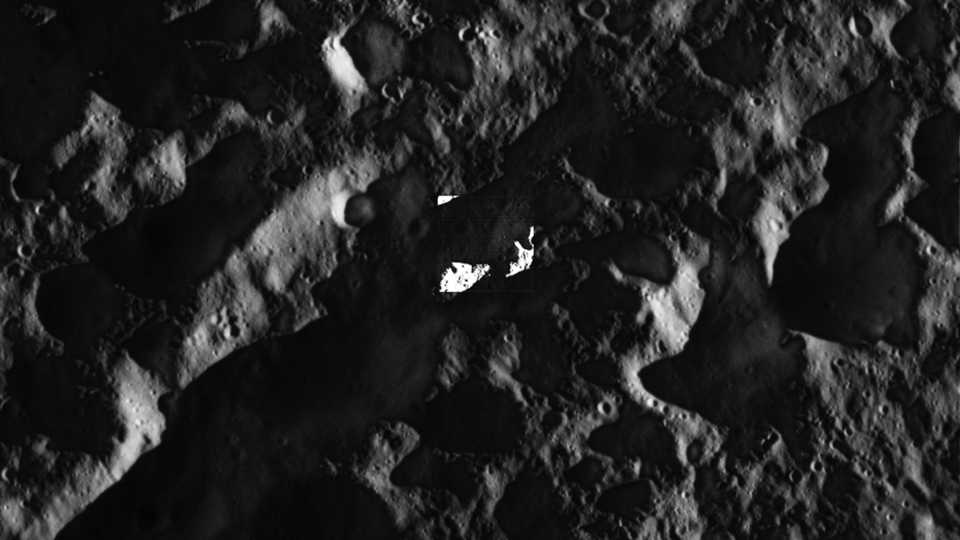Science News
Space Friday: Lunar Lava, Cassini, and Life Patterns
Origins of Ancient Lunar Lava Fountains
Publishing this week in Nature Geoscience, researchers identify carbon in microscopic glass samples brought back from the Moon during the Apollo missions, shedding light on what may have driven fiery fountains of lava in the Moon’s ancient past.
Our moon has not always been a quiet, docile neighbor. After its formation from the coalesced debris of a Mars-size object slamming into Earth some 4.5 billion years ago, the Moon’s surface was hot and active, with magma sometimes bubbling up and breaking the surface in fiery fountains, like a molten-hot geyser (think Old Faithful). Such eruptions are common in Hawaiian volcanoes, and require a mix of volatile gas along with the lava. Which gasses could have caused such fiery explosions on the ancient moon though, has remained a mystery. Since 2008, Alberto Saal of Brown University and others have detected water, sulfur, chlorine, and fluorine in the same lunar volcanic beads, showing the Moon was not void of volatiles as once thought, but none of those elements could account for the specific mineral signatures of the fiery explosions.
The glass droplets collected by Apollo 15 and 17 formed from molten lava and act as a record of its composition. Saal’s team utilized NanoSIMS ion probe at the Carnegie Institute of Science to detect levels of carbon within the glass. The measurements suggest magma deep within the early Moon contained higher concentrations of the element, which combined with oxygen to form carbon monoxide as magma rose. Pressure lessened as it approached the surface, resulting in the carbon monoxide bubbling out and propelling the magma upward.
The team also noted that all of the volatile elements found in the moon glass exist in concentrations very similar to those of lava that formed Earth’s ocean floor, indicating they may have had the same origin. Saal elaborates: “The volatile evidence suggests that either some of Earth’s volatiles survived that impact [of the Mars sized object] and were included in the accretion of the Moon or that volatiles were delivered to both the Earth and Moon at the same time from a common source—perhaps a bombardment of primitive meteorites.” –Elise Ricard
A Last Look at Dione and Plans for Cassini’s “Grand Finale”
NASA’s Cassini spacecraft, orbiting Saturn since 2004, has made its fifth and final close pass near Dione, the fourth largest of the giant planet’s 62 known natural satellites. Flying within 300 miles (480 kilometers) of Dione’s surface on August 17, the spacecraft gave us our last look at the heavily-cratered moon for the foreseeable future, as no other missions to Saturn are currently planned. While not as close as a 60-mile (100-kilometer) flyby that Cassini made in 2011, this encounter was focused on gravity and magnetospheric science rather than imaging. Still, the few images were stunning, one of them showing Dione suspended against the backdrop of Saturn and its rings, and another zeroing in on details on Dione’s nighttime side, illuminated by sunlight reflecting off Saturn.
Scientists hope that the magnetic field data collected during this pass will help uncover clues about the interior structure of the 700-mile (1,120-kilometer) diameter moon: certain stress features on its surface suggest processes that could be caused by a subsurface ocean.
Underground oceans are also thought to exist on other moons in the Solar System, including a smaller moon of Saturn’s, Enceladus, which measures less than half the diameter of Dione. Cassini will have three final opportunities to fly past Enceladus on October 14, October 28, and December 19. The October 28 encounter will involve passing about 30 miles (50 kilometers) above the surface and directly through the plumes of water vapor being ejected from that moon’s south pole region. Scientists think that a reservoir of water deep below the surface may feed approximately 100 active geysers mapped in that area.
Passes near other large, icy moons and several smaller, irregularly-shaped moons are scheduled next year, during which the orientation of Cassini’s orbit will be changed from equatorial to polar. This is in preparation for the mission’s dramatic “Grand Finale” in 2017—an orbital trajectory that will take the spacecraft between the planet and the innermost edge of its dazzling ring system 22 times before ending with a plunge into Saturn’s hazy atmosphere in September 2017. –Bing Quock
Patterns of Life
New research by Harvard astrophysicists shows that if life can travel between the stars (a process called panspermia), it would spread in a characteristic pattern that we could potentially identify. “In our theory clusters of life form, grow, and overlap like bubbles in a pot of boiling water,” says lead author Henry Lin of the Harvard-Smithsonian Center for Astrophysics (CfA).
The model assumes that microscopic “seeds” from one living planet spread outward in all directions. If a seed reaches a habitable planet orbiting a neighboring star, it can take root. Over time, the result of this process would be a series of life-bearing oases dotting the galactic landscape.
“Life could spread from host star to host star in a pattern similar to the outbreak of an epidemic. In a sense, the Milky Way galaxy would become infected with pockets of life,” explains CfA co-author Avi Loeb.
If we detect signs of life in the atmospheres of alien worlds, the next step will be to look for a pattern. But Lin and Loeb caution that a pattern will only be discernible if life spreads somewhat rapidly. Since stars in the Milky Way drift relative to each other, stars that are neighbors now won’t be neighbors in a few million years.
There goes the neighborhood! –Molly Michelson

